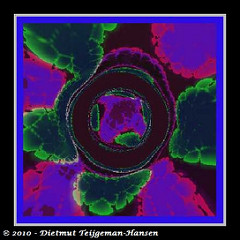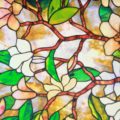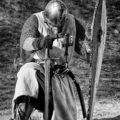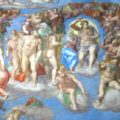The ancient peoples known as the Celts spoke a group of languages that originated from the Indo-European code called Common Celtic or Proto-Celtic. Scholars initially believed that these languages indicated a common hereditary origin in southwest Europe, with the Celts spreading their culture through migration and invasion. Archaeologists have identified various cultural traits of these peoples, including artistic designs, which can be traced back to the Hallstatt and La Tène cultures. However, recent research suggests that not all Celtic groups shared a common ancestry, and that the spread of Celtic culture may have occurred through diffusion rather than mass migration.
The term “Celt” was historically used as a synonym for the Gauls (Celtae). The modern English form of the word emerged in 1607. In the late 17th century, scholars like Edward Lhuyd drew attention to the historical connections between Gaulish and the Brythonic and Goidelic-speaking peoples, expanding the term to include not only continental Celts but also those in Britain and Ireland. The 18th century saw a surge of interest in all things Celtic and Druidic, driven by the idea of “primitivism” and the concept of the “noble savage.” The “Irish revival” in the 19th century aimed to establish an Irish national identity and later sparked a broader “Celtic revival” in other nations.
During the Stone Age, dolmens or cromlechs were constructed throughout the British Isles, predating the arrival of the Celtic peoples but influencing Celtic art. Wales is home to approximately 150 surviving dolmens, including the famous Pentre Ifan in Preseli, Pembrokeshire. The bluestones used in Stonehenge also come from Preseli, suggesting cultural and artistic links between Wales and England. These structures are considered the oldest human-made permanent structures in the world, even older than the Egyptian pyramids.
In the Bronze Age, Celtic art was influenced by bronze materials. The Iron Age saw the emergence of the Hallstatt, La Tène, and British/Irish traditions, which had significant impacts on Celtic art. In the early Middle Ages, Insular art became prominent among the Celtic-speaking people of Ireland and Britain. This art style flourished from the 5th to the 12th centuries and influenced Northern European art through the Hiberno-Scottish mission.
In Ireland, Celtic art had an uninterrupted history from before and during the Roman era, as Roman influence did not reach the island. The 5th to 7th centuries marked a continuation of late Iron Age La Tène art in Ireland, which later mixed with Germanic traditions through Irish missionary contacts with the Anglo-Saxons, resulting in the Hiberno-Saxon style. Scandinavian influences were added during the Viking Age, and Celtic art declined with the Norman invasion and the introduction of Romanesque art.
In Wales, standing stones and geometric patterns were prevalent during the early period, and metalwork from the 8th century, including penannular brooches, has been discovered. Manuscripts like the Lichfield Gospels, Hereford Gospels, Ricemarch Psalter, and The Black Book of Basingwerk demonstrate the development of Celtic art in Wales.
The Celtic revival, which began in the Romantic era, led to renewed interest in Celtic art. Many contemporary artists drew inspiration from ancient or medieval Celtic art themes, resulting in a variety of works, including logos, jewelry, crafts, and postcards.
Overall, Celtic art encompasses various forms and styles, such as hanging bowls, carpet Carpet making - Here's a very interesting article on the Art of carpet making, written by Alhan Keser. Alhan is in in charge of communications for Tip Top Design, a company that specializes in interior design with oriental rugs. He has lived in Turkey and France, working as a freelance journalist and documentary maker. Carpet making The story… pages, high crosses, Pictish stones, and the Insular art or Hiberno-Saxon style. The art reflects the rich cultural and artistic heritage of the Celtic peoples throughout history.
Manuel Marino is a seasoned Senior Producer, Music Composer, and Artist with over a decade of experience. He specializes in branded entertainment across various mediums, including video games, films, and advertising campaigns. With 20+ years as a game music composer, Manuel has worked on numerous platforms, creating diverse orchestral soundtracks. HIRE ME


 Manuel is a passionate, driven, and techsavvy AV technician,
Manuel is a passionate, driven, and techsavvy AV technician, 










